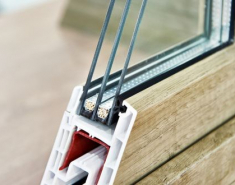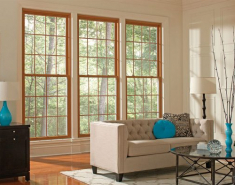Insight into window replacement in condos
Residential windows have an anticipated service life in the range of 35 to 45 years but may require replacement in half of that time if problems develop. The timeframe is the same for new windows or windows installed 20 years ago, and depends on the quality of the design, fabrication, and installation.
A window replacement program can be an expensive endeavour that involves a significant amount of work and disturbance within owners’ units. To ensure a successful project and avoid potential pitfalls, the board should answer the following four questions at the outset:
1. Why are the windows being replaced?
There are a number of reasons to replace windows, including ongoing leaks, interior comfort, energy use, and aesthetics, to name a few. However, it is important to understand the reason for replacement to ensure that the work will address the problem.
For example, leaks could be occurring within the window system, or at the window perimeters (or both). Window replacement won’t necessarily address leaks at the perimeters, as the leak may be more related to a deficiency in the surrounding cladding than the window itself. Even if the water is showing up at the window sill, it may be originating at the surrounding cladding and leaking through the window joinery. Therefore, it is important to understand the cause and pathway(s) of the water infiltration to ensure the success of the repair strategy.
Improvements to interior comfort and energy performance go hand in hand, and are common reasons for window replacement projects. This is particularly so in 1960s or 1970s-era buildings that have single glazing (one pane of glass), non-thermally broken frames, and drafty windows.
Window replacement can reduce heating and cooling energy use by as much as 10 to 20 per cent, depending on a building’s mechanical systems, glazing ratios, and surrounding wall construction. Improvements in comfort can be substantial, including window surfaces that are not cold to the touch in the winter; however, drafts can still occur with new operable windows and especially with sliders.
2. Vinyl or aluminum windows?
Modern window frames are most commonly constructed of vinyl or aluminum but can also be constructed of fibreglass or wood. Vinyl window frames typically have a better U-value (how well the windows insulate a building, preventing heat loss in the winter and heat gain in the summer) than aluminum, but aluminum is generally considered more durable.
Many window products are tailored to specific markets, be it low-rise townhouses or 10-storey brick buildings, and these products may not be interchangeable.
Vinyl windows are most commonly used for low-rise residential buildings and smaller window sizes. The entire frame is made of vinyl, which is great at resisting heat flow (low U-value, high R-value). However, vinyl windows can only be made so big because of their flexibility.
When used in non-combustible construction, vinyl windows may also be restricted by building code limits on the maximum wall area and allowable spacing between windows. If vinyl windows are to replace something other than vinyl windows, the designer should review their configuration to ensure the application is appropriate.
Aluminum-framed windows are popular for mid to high-rise residential buildings. In addition to good structural/strength properties that allow large spans, the material is durable and maintains a good appearance with time.
3. What standards should the windows meet?
For wholesale window replacement, new windows must comply with the current building code. In Ontario, that’s the 2012 Ontario Building Code (OBC).
In particular, the windows will need to meet the new window standard AAMA/WDMA/CSA 101/I.S.2/A440, NAFS – North American Fenestration Standard/Specification for Windows, Doors, and Skylights, including the Canadian supplement. NAFS sets requirements for the testing and labelling of the window products. Each window receives a label describing its performance rating; windows that do not have the label do not meet the building code.
Windows that are located less than 1,070 millimetres above the interior finished floor may need to act as guards that protect people from falling out of the windows. Non-operable windows need to withstand guard loads that are outlined in Part 4 and Part 9 of the OBC. Essentially, windows cannot break if someone is leaning on them where there is the possibility that the person could fall through. Plus, operable windows require limiters to keep them from opening all the way.
The energy efficiency of windows has come a long way, but windows still typically have the worst thermal resistance (R-value) of the building exterior. The building code outlines thermal performance requirements for different areas (windows in northern Ontario must have better thermal performance than windows in southern Ontario).
In general, window R-values are in the range of R2.3 to R3, depending on the geographic location. By comparison, the rest of the wall is around R20. To meet these requirements, windows need to be constructed with two panes of glass, have a non-metallic or thermally broken spacer, have a good thermal break in the frame, and have a low emissivity coating. However, be aware that not all spacers or coatings are created equal; the rush to develop new products has also pushed some less proven products onto the market. Don’t be shy to ask for project references where the product has been used before.
4. How much interior disruption should residents expect?
Window replacement can be disruptive for anyone in the unit during the work, but each window is typically completed before the end of the work day and the unit is handed back watertight. Finish painting or drywall repairs may require return visits.
Furniture must be moved away from the windows and protected with drop clothes. It will speed up the work if residents can move the furniture before the contractor gets there, and then the contractor will install the protection. In many cases, the board will decide to engage security staff to be present during the work.
Unlike repairs in the mechanical room or garage, window replacement work occurs in the personal space of each resident, which can be inconvenient and intrusive. It is important to have contractors that are familiar with working in occupied spaces that can return clean, completed units each day.
In sum, it’s important to establish the reason for undertaking a window replacement project to ensure the project fulfills its goals. Also important are selecting the right replacement product and ensuring the product and its installation meet building code and other required standards. Finally, preparing resident for what can be an intrusive project is another critical step before getting started.
Source: https://bit.ly/2ubPVZO








